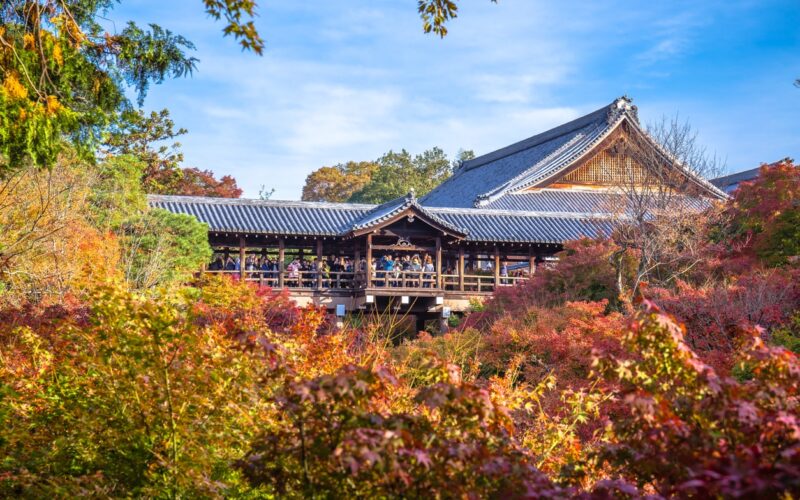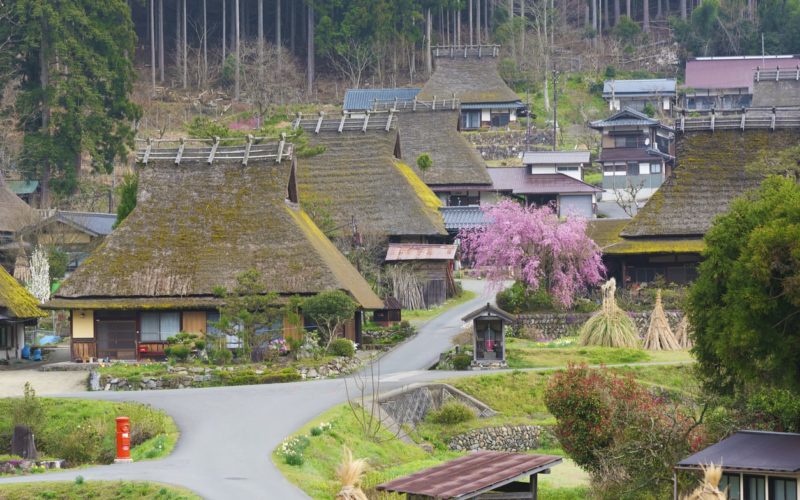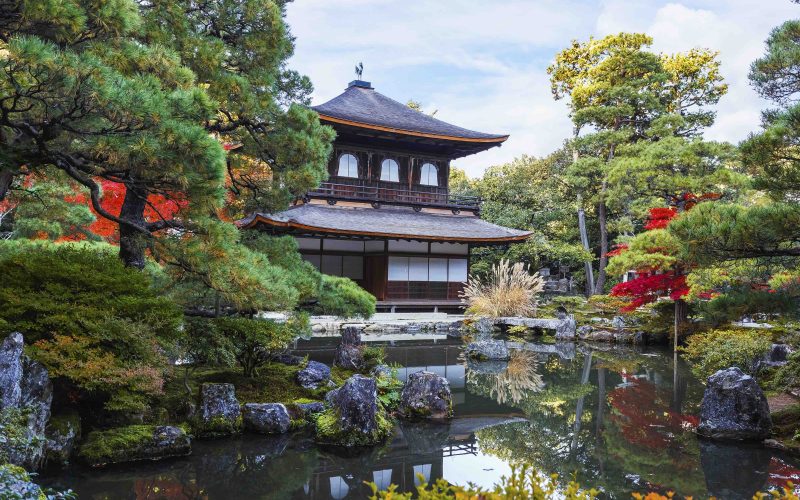Kinkaku-ji Temple (Golden Pavilion)
See it with your own eyes at Kinkaku-ji Temple.
Close your eyes and picture a gilded pavilion pasted entirely in gold leaf, framed by pine trees, its reflection glistening in a pristine pond. You probably know the image already.
As the global poster child for Kyoto’s many World Heritage Sites, Kinkaku-ji Temple (Golden Pavilion) runs the real risk of being disappointing in real life. But despite the crowds all jostling for the same selfie, and the fact that you can’t actually go inside the temple building, Kinkaku-ji is truly, madly and deeply spectacular.
A temple with two names
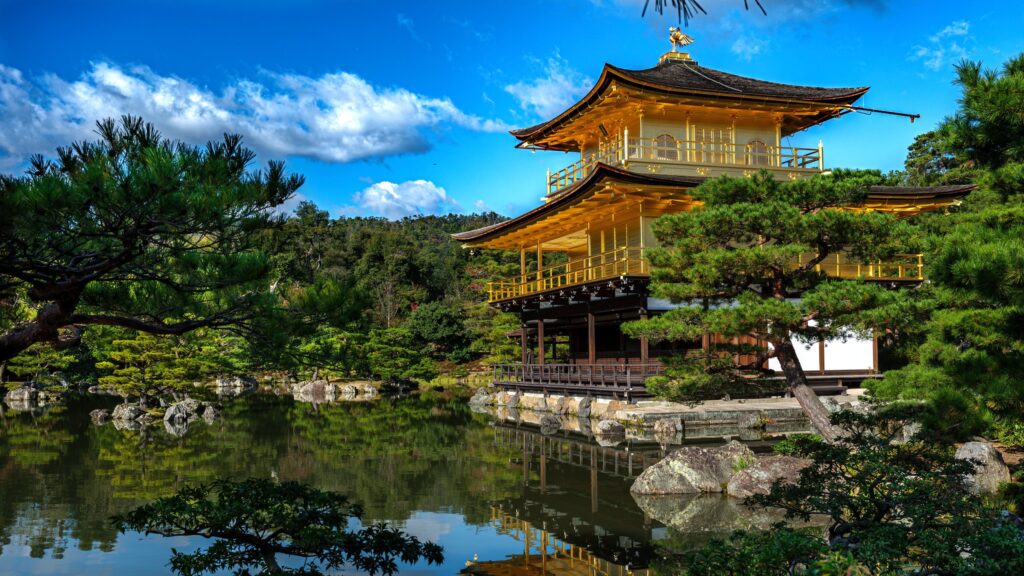
Photo by: Gilbert Sopakuwa The temple of the Golden Pavilion, or Rokuon-ji, Deer Garden Temple, in the north of Kyoto.
While the three-story Golden Pavilion is known as Kinkaku, it is technically located on the grounds of the Rokuon-ji Temple (the temple’s official name) complex. With construction dating to the late 14th century, Kinkaku originally served as a retirement villa for Ashikaga Yoshimitsu, a shogun (top military commander) and prominent patron of the arts.
After Yoshimitsu’s death in 1408, the golden pavilion was converted into a Zen temple, and since become known as Kinkaku-ji despite the official name.
The temple’s brilliant exterior gives the impression of fire on the water but Kinkaku-ji has actually been on fire more than once. The first blaze occurred back in the Onin War (1467-77) while the second happened in 1950 when a distraught novice monk attempted to die among the golden flames.
The bronze phoenix
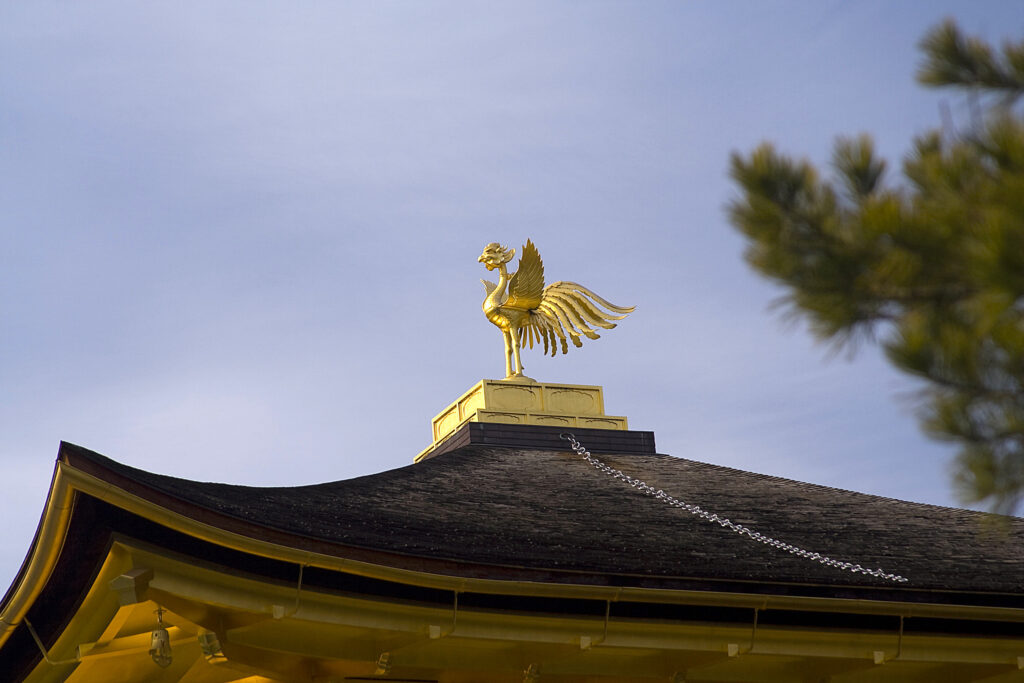
Photo by: Stefan Lins Kinkakuji Temple was fully restored in 1955.
After the vision of gold— with a phoenix perched upon the temple’s peak—was resurrected from the ashes and restored to its present-day glory in 1955.
As though floating upon a pond dotted with tiny islands of twisted pine trees, Kinkaku-ji’s grandeur can also be seen as beautifully muted. While days of warm weather enhance the temple’s glow with the sun’s rays, Kinkaku-ji can be equally breathtaking on rainy days when the golden hues are subdued and more wabi-sabi-esque like its brother temple, Ginkaku-ji (Silver Pavilion).
Topics: history, kyoto, shrines and temples
